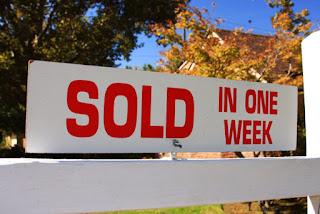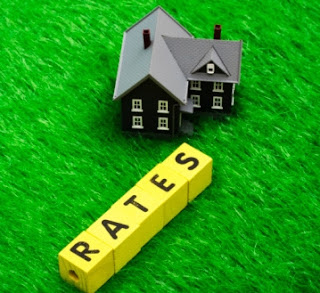Can Your Home Survive a Wildfire?
Whether a home survives a wildfire is not random, nor is it a function of luck, most homes that exhibited attributes promoted by the FireSmart program -- including keeping combustible vegetation away from the house, uncluttered yards and low-flammability roofs and surfaces -- survive fires.
It seems clear that the survival of homes was a function of resistance to ignition and not a random event or a matter of luck, Beyond doubt, risk mitigation (FireSmart) guidelines demonstrated their effectiveness in mitigating risk under the harshest of wildfire conditions.
Most homes caught on fire as the result of embers from the forest fire landing on their property. "Based on site visits, no instances were observed where home ignition could confidently be attributed to direct contact by flames of the burning forest, and there were very few observations where home ignition was likely due only to radiant heat from the forest. Other studies have shown that embers generated by burning vegetation are common at distances of 300 to 1500ft, can occur at distances as far away as 8 miles and have been recorded as far away as 15 miles.
A new FireSmart Home Development Guide was recently released to help homeowners reduce the risk from wildfire. It's produced by FireSmart Canada, a national program designed to reduce wildfire risk that is administered a non-profit coalition called Partners in Protection.
The guide recommends that homes in wildfire-prone areas should have a simple roof design, made of non-combustible materials such as clay tile, concrete tile, metal or asphalt shingles. It should have few places where embers or combustible materials can accumulate. Proper maintenance of dormers, skylights and solar panels is recommended. Roof vents should be screened. Soffit vents can pull embers into the home during a fire so they should be screened as well.
It says some types of siding, such as vinyl, can melt when exposed to high temperatures, allowing the fire to reach the underlying wall components. Stucco, brick, fiber cement boards/panels and poured concrete offer better fire resistance. Multi-pane, tempered glass windows are recommended. Garage doors should fit properly with no gaps to allow for embers to enter.
Maintaining and removing combustible debris (such as lumber, stored vehicles, branches, grass and leaves) and firewood near the exterior walls will reduce a building's vulnerability to ignition during a wildfire, It is important to inspect your vents and openings regularly to ensure the vents are in good repair and remove any combustible debris.
Gutters and downspouts should be made of non-combustible material and should have a metal drip edge and a gutter guard.
For decks and porches, "the materials used to build the deck, combustible materials you store under your deck and the vegetation around it all contribute to how vulnerable you deck will be," says the guide. It suggests sheathing the underside of the deck or balcony with fire-resistance sheathing. Surround it with materials such as rock mulch, gravel, brick, concrete pavers or stones to prevent vegetative growth.
Landscaping is also an important part of making the home more fire resistant. The guide says there should be a 5ft horizontal non-combustible surface perimeter along the outer walls of the house.
Within 30ft of the structures, avoid using any woody debris such as mulch. Plants to avoid are cedar, juniper, pine, spruce and tall grass.
"A mowed lawn is a fire-resistant lawn. Grasses shorter than 1/2 inch in height are less likely to burn intensely," says the guide.
Any place where conditions allow for ignition and spread of fire between structures and vegetation -- the wildland-urban interface -- people are more exposed to the risk of wildfire and that needs to be considered and managed by all stakeholders. Preparing for the threat of a wildfire is a shared responsibility that will only grow in importance as climate change and other factors continue to increase the risk.
By Jim Adair
It seems clear that the survival of homes was a function of resistance to ignition and not a random event or a matter of luck, Beyond doubt, risk mitigation (FireSmart) guidelines demonstrated their effectiveness in mitigating risk under the harshest of wildfire conditions.
Most homes caught on fire as the result of embers from the forest fire landing on their property. "Based on site visits, no instances were observed where home ignition could confidently be attributed to direct contact by flames of the burning forest, and there were very few observations where home ignition was likely due only to radiant heat from the forest. Other studies have shown that embers generated by burning vegetation are common at distances of 300 to 1500ft, can occur at distances as far away as 8 miles and have been recorded as far away as 15 miles.
A new FireSmart Home Development Guide was recently released to help homeowners reduce the risk from wildfire. It's produced by FireSmart Canada, a national program designed to reduce wildfire risk that is administered a non-profit coalition called Partners in Protection.
The guide recommends that homes in wildfire-prone areas should have a simple roof design, made of non-combustible materials such as clay tile, concrete tile, metal or asphalt shingles. It should have few places where embers or combustible materials can accumulate. Proper maintenance of dormers, skylights and solar panels is recommended. Roof vents should be screened. Soffit vents can pull embers into the home during a fire so they should be screened as well.
It says some types of siding, such as vinyl, can melt when exposed to high temperatures, allowing the fire to reach the underlying wall components. Stucco, brick, fiber cement boards/panels and poured concrete offer better fire resistance. Multi-pane, tempered glass windows are recommended. Garage doors should fit properly with no gaps to allow for embers to enter.
Maintaining and removing combustible debris (such as lumber, stored vehicles, branches, grass and leaves) and firewood near the exterior walls will reduce a building's vulnerability to ignition during a wildfire, It is important to inspect your vents and openings regularly to ensure the vents are in good repair and remove any combustible debris.
Gutters and downspouts should be made of non-combustible material and should have a metal drip edge and a gutter guard.
For decks and porches, "the materials used to build the deck, combustible materials you store under your deck and the vegetation around it all contribute to how vulnerable you deck will be," says the guide. It suggests sheathing the underside of the deck or balcony with fire-resistance sheathing. Surround it with materials such as rock mulch, gravel, brick, concrete pavers or stones to prevent vegetative growth.
Landscaping is also an important part of making the home more fire resistant. The guide says there should be a 5ft horizontal non-combustible surface perimeter along the outer walls of the house.
Within 30ft of the structures, avoid using any woody debris such as mulch. Plants to avoid are cedar, juniper, pine, spruce and tall grass.
"A mowed lawn is a fire-resistant lawn. Grasses shorter than 1/2 inch in height are less likely to burn intensely," says the guide.
Any place where conditions allow for ignition and spread of fire between structures and vegetation -- the wildland-urban interface -- people are more exposed to the risk of wildfire and that needs to be considered and managed by all stakeholders. Preparing for the threat of a wildfire is a shared responsibility that will only grow in importance as climate change and other factors continue to increase the risk.
By Jim Adair



Comments